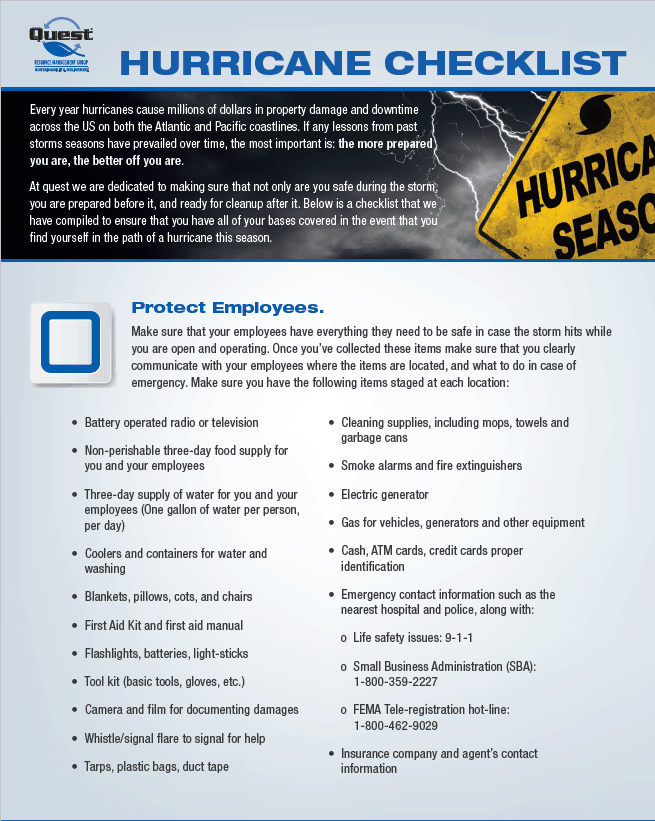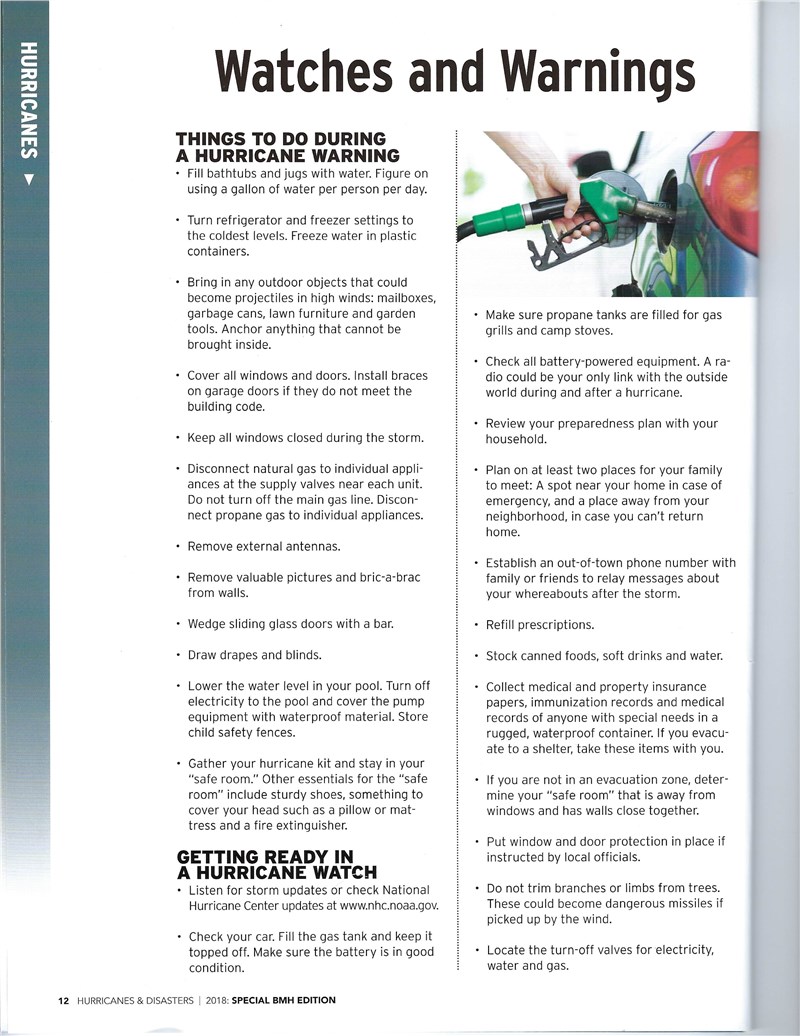

- #Hurricane preparedness checklist hawaii how to
- #Hurricane preparedness checklist hawaii download
FEMA Mobile App Download the newly updated FEMA App to get preparedness strategies and real-time weather and emergency alerts. Visit Stay Safe After a Hurricane or Other Tropical Storm for more tips on staying safe after a hurricane.Īfter you have read these tips, please review the other resources available on the CDC Hurricanes website. Build a Kit Make sure your emergency kit is stocked with the right items. Place generators outside at least 20 feet from any door, window, or vent.

Prevent carbon monoxide (CO) poisoning after the storm: Ensure your CO detector has working batteries.

 Avoid flooded areas: Take precautions before, during, and after a flood. In addition to preparing for a hurricane, it’s important to take steps to stay safe after a hurricane is over, for example: Preparing now can help keep you and your family safe. Power outages during and after a hurricane can prevent you from accessing information online when you most need it. Protect your pets: Ensure your pet’s safety before, during, and after a hurricane.ĬDC recommends that you print important documents (e.g., emergency phone numbers, insurance information) before a hurricane strikes. Protect older adults: Understand older adult health and medical concerns. For a quick reference and checklist with suggestions for what to include in your disaster supplies. Prepare to evacuate: Never ignore an evacuation order. Emergency Preparedness Handbook from Hawaiian Electric. Make a plan: Create a family disaster plan. Get emergency supplies: Stock your home and your car with supplies. Heavy rain and surf has resulted in stormwater runoff entering into coastal waters. A BrownWaterAdvisory has been issued at Oneawa Beach on O‘ahu. Prepare for a hurricane: Take basic steps now to ensure your safety should a storm hit. Hawaii Emergency Management Agencys social media accounts not monitored 24/7. Preparing for a Hurricaneįollow these important hurricane preparedness tips from CDC: Expert: Preparing your home for hurricane should happen well before cyclone nears. It’s always important to be prepared for a hurricane. May 1 to May 7 is Hurricane Preparedness Week, a time to evaluate your personal risk and gather emergency. The Atlantic hurricane season is June 1 through November 30 each year. It takes just one storm to change your life. If you live in areas at risk, the Centers for Disease Control and Prevention (CDC) encourages you to be prepared for hurricane season. You can’t stop a tropical storm or hurricane, but you can take steps now to protect yourself and your family. Follow FEMA Region 9 online at /femaregion9. If you own or rent, now is the time to talk to your insurance agent about protecting your home and valuables.įor more information, visit or call 87.įEMA’s mission is helping people before, during, and after disasters. Insurance policies normally take 30 days to go into effect. With it, you have the peace of mind that you and your home can, and will, recover after an unexpected flood.” “One of the most important steps homeowners can take is to renew or purchase flood insurance to prepare for this year’s hurricanes and seasonal flood-producing rains. “Where it can rain, it can flood,” says FEMA Regional Administrator Robert Fenton. When only an inch of water in a home can cost more than $25,000 to repair, flood insurance can be the difference between recovery and financial devastation.
Avoid flooded areas: Take precautions before, during, and after a flood. In addition to preparing for a hurricane, it’s important to take steps to stay safe after a hurricane is over, for example: Preparing now can help keep you and your family safe. Power outages during and after a hurricane can prevent you from accessing information online when you most need it. Protect your pets: Ensure your pet’s safety before, during, and after a hurricane.ĬDC recommends that you print important documents (e.g., emergency phone numbers, insurance information) before a hurricane strikes. Protect older adults: Understand older adult health and medical concerns. For a quick reference and checklist with suggestions for what to include in your disaster supplies. Prepare to evacuate: Never ignore an evacuation order. Emergency Preparedness Handbook from Hawaiian Electric. Make a plan: Create a family disaster plan. Get emergency supplies: Stock your home and your car with supplies. Heavy rain and surf has resulted in stormwater runoff entering into coastal waters. A BrownWaterAdvisory has been issued at Oneawa Beach on O‘ahu. Prepare for a hurricane: Take basic steps now to ensure your safety should a storm hit. Hawaii Emergency Management Agencys social media accounts not monitored 24/7. Preparing for a Hurricaneįollow these important hurricane preparedness tips from CDC: Expert: Preparing your home for hurricane should happen well before cyclone nears. It’s always important to be prepared for a hurricane. May 1 to May 7 is Hurricane Preparedness Week, a time to evaluate your personal risk and gather emergency. The Atlantic hurricane season is June 1 through November 30 each year. It takes just one storm to change your life. If you live in areas at risk, the Centers for Disease Control and Prevention (CDC) encourages you to be prepared for hurricane season. You can’t stop a tropical storm or hurricane, but you can take steps now to protect yourself and your family. Follow FEMA Region 9 online at /femaregion9. If you own or rent, now is the time to talk to your insurance agent about protecting your home and valuables.įor more information, visit or call 87.įEMA’s mission is helping people before, during, and after disasters. Insurance policies normally take 30 days to go into effect. With it, you have the peace of mind that you and your home can, and will, recover after an unexpected flood.” “One of the most important steps homeowners can take is to renew or purchase flood insurance to prepare for this year’s hurricanes and seasonal flood-producing rains. “Where it can rain, it can flood,” says FEMA Regional Administrator Robert Fenton. When only an inch of water in a home can cost more than $25,000 to repair, flood insurance can be the difference between recovery and financial devastation. #Hurricane preparedness checklist hawaii how to
The Handbook covers many retrofit measures such as how to install the Hawaii Plantation Tie hurricane clip, adding window protection and strengthening roofs. Homeowners’ and renters’ policies generally do not cover flood damage. Retrofit Options Almost every house in the state can be strengthened for hurricanes, the 1 hazard risk in the state. Even a glancing blow from a hurricane or a significant rain system that passes over land, saturated by previous storms, can trigger a major mudslide and cause significant structural damage. While this forecast represents fewer storms, it does not predict hurricane landfalls. Agility Recovery, a former division of GE, has over 20 years of disaster recovery and business continuity experience dedicated to delivering innovative business continuity solutions that challenge the traditional industry barriers of scale, cost and complexity. Make a checklist of the supplies you will need for your household. This year, the National Weather Service predicts there may be between two and five tropical storms and hurricanes in the Central Pacific. Have an emergency supply kit ready in case of a crisis. The 2021 Central Pacific hurricane season runs from June 1 to Nov. HONOLULU, Hawaii - With hurricane season fast approaching, the Federal Emergency Management Agency (FEMA) and its National Flood Insurance Program advise Hawaii residents to prepare now for hurricane-related storms and flooding.








 0 kommentar(er)
0 kommentar(er)
